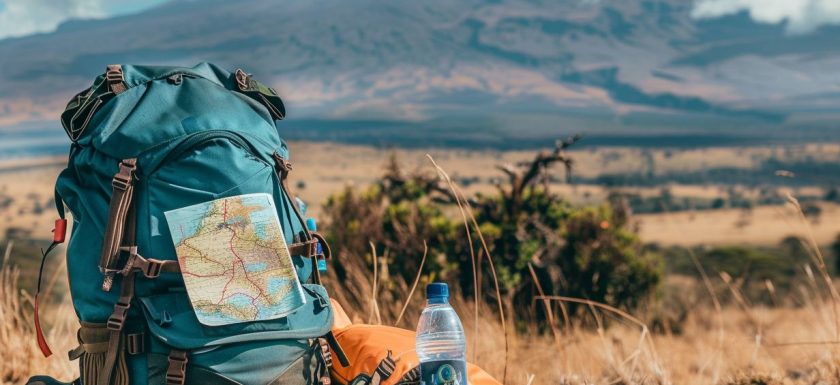
Heading to Kilimanjaro? Wondering what to pack for your climb? Look no further!
In this comprehensive guide, we will cover everything you need to know about essential gear, clothing, footwear, accessories, toiletries, and medications for your Kilimanjaro adventure.
From must-have items to recommended gear, we’ve got you covered. So, grab your packing list and get ready to conquer the tallest peak in Africa!
Key Takeaways:
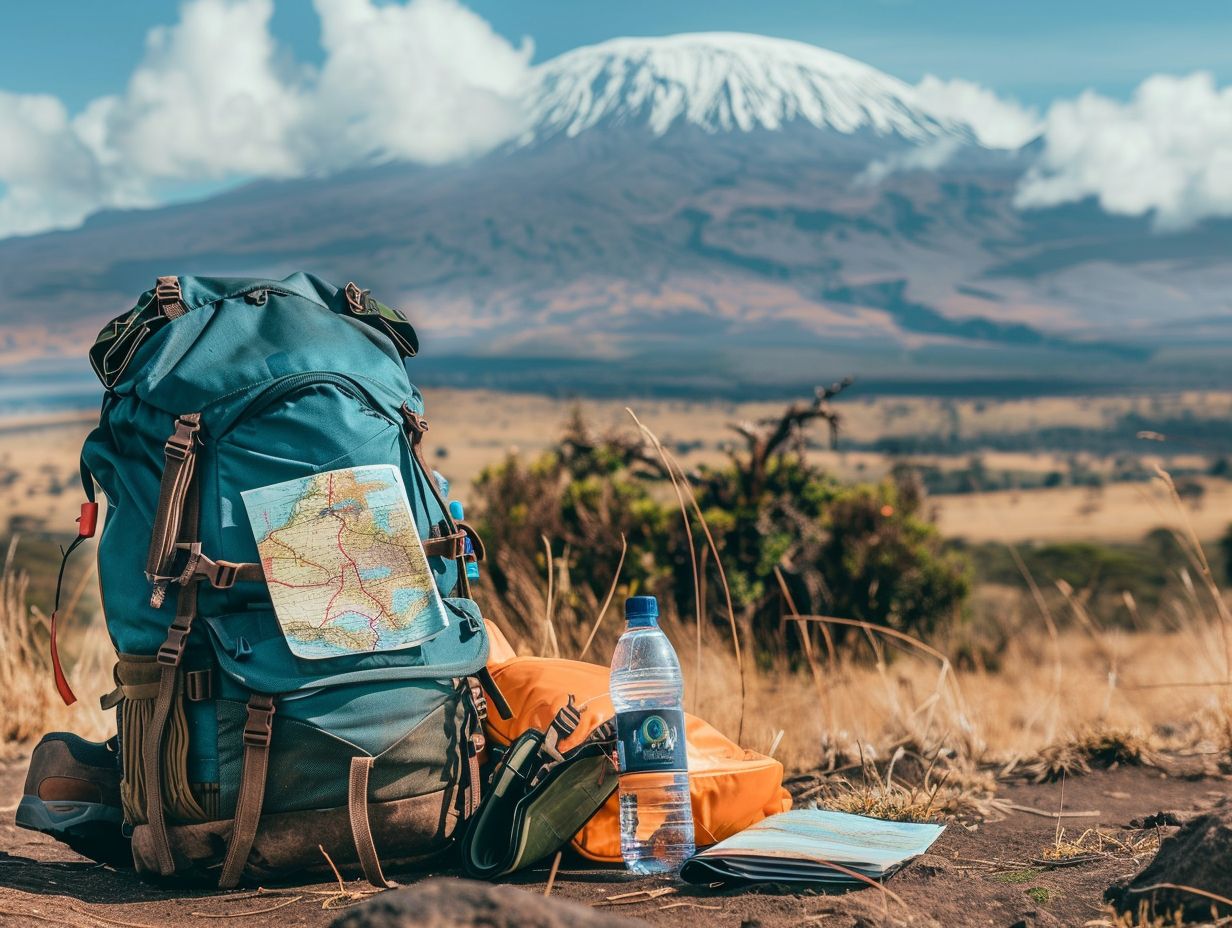
- Must-have items for Kilimanjaro include a comfortable backpack, sturdy hiking boots, and proper travel documents.
- Recommended items include a first aid kit, water filtration system, and warm layers for unpredictable weather.
- Essential clothing items for Kilimanjaro are thermal base layers, waterproof outerwear, and a warm sleeping bag.
What to Pack for Kilimanjaro?
When preparing for a climb up Mount Kilimanjaro, it is essential to pack wisely to ensure a safe and comfortable journey. Your packing list should include a variety of items such as bags, sleeping equipment, clothing, footwear, headgear, eyewear, personal hygiene products, repair kits, cameras, tech devices, and first aid supplies.
Each item on the packing list plays a crucial role in the success of your Kilimanjaro expedition. Properly selected hiking shoes are vital to protect your feet against rough terrains and reduce the risk of blisters. High-quality sleeping equipment ensures a good night’s rest, essential for maintaining energy levels during the challenging ascent.
Appropriate clothing, including moisture-wicking layers and insulating jackets, help regulate body temperature in varying mountain conditions. Protective headgear shields you from the sun’s intense rays, while sunglasses safeguard your eyes from glare and snow blindness.
Essential Gear for Climbing Kilimanjaro
When embarking on a Kilimanjaro climb, having the right gear is crucial for your safety and comfort. Essential items include clothing layers such as waterproof and fleece garments, down jacket, base layer, trekking trousers, trekking tops, underwear, gloves, mitts, sleeping bag, sleeping pad, travel pillow, buff, sunglasses, sun hat, insulated hat, ear plugs, contact lenses, personal hygiene products, repair kits, cameras, tech gadgets, and first aid essentials.
What Are the Must-Have Items for Climbing Kilimanjaro?
Certain items are critical for climbing Kilimanjaro, including tents for shelter, clothing layers like waterproof gear and fleece, a down jacket for warmth, a quality sleeping bag, a travel pillow for rest, sunglasses, ear plugs, personal hygiene essentials, and a well-stocked first aid kit.
Each of these items plays a crucial role in ensuring the safety and comfort of climbers as they tackle the challenging terrain of Kilimanjaro. Tents provide shelter from the elements, protecting climbers from the unpredictable weather conditions they may encounter on the mountain.
The clothing layers, such as waterproof gear and fleece, help regulate body temperature and keep climbers dry and warm, especially during the cold nights at higher altitudes. A down jacket becomes a lifesaver in extreme cold, providing that extra insulation needed to ward off frostbite and hypothermia.
What Are the Recommended Items for Climbing Kilimanjaro?
Plus the must-have items, climbers are recommended to bring cameras or tech devices for capturing memories, repair kits for emergencies, headgear, eyewear, gloves, mitts, trekking trousers, trekking tops, underwear, a sun hat, and an insulated hat for added protection and comfort during the Kilimanjaro expedition.
Having a camera or tech device is crucial for documenting the journey and capturing breathtaking views on Kilimanjaro. A repair kit can be a lifesaver in unexpected situations, ensuring climbers can address gear malfunctions promptly. Headgear and eyewear shield climbers from harsh sun rays and wind, while sturdy gloves and mitts protect hands in cold conditions.
Trekking trousers and tops offer flexibility and comfort during long hikes, complementing the importance of proper underwear for moisture management. A sun hat shields against sunburn, while an insulated hat provides crucial warmth at higher altitudes.
Clothing for Climbing Kilimanjaro
Selecting appropriate clothing is essential for a Kilimanjaro climb. Clothing layers such as waterproof garments, fleece items, a down jacket, base layer, trekking trousers, trekking tops, underwear, gloves, mitts, a sun hat, and an insulated hat play a crucial role in keeping climbers warm, dry, and protected during the ascent.
In the challenging mountainous terrain of Kilimanjaro, having waterproof garments is vital to combat unpredictable weather conditions and ensure moisture does not penetrate through to inner layers.
The insulating properties of fleece items and a down jacket provide essential warmth during colder segments of the climb. Base layers are crucial in wicking away sweat and regulating body temperature, while trekking trousers offer durability and mobility.
For the upper body, trekking tops made of moisture-wicking materials are ideal to keep sweat at bay. Layering with appropriate undergarments helps in maintaining comfort and prevents chafing. Gloves and mitts protect the hands from cold wind and frostbite, with the latter providing additional warmth.
A sun hat shields the face and head from harsh UV rays and sunburn at higher altitudes, while an insulated hat retains heat and prevents heat loss from the body during breaks or rest periods.
What Are the Recommended Clothing Items for Climbing Kilimanjaro?
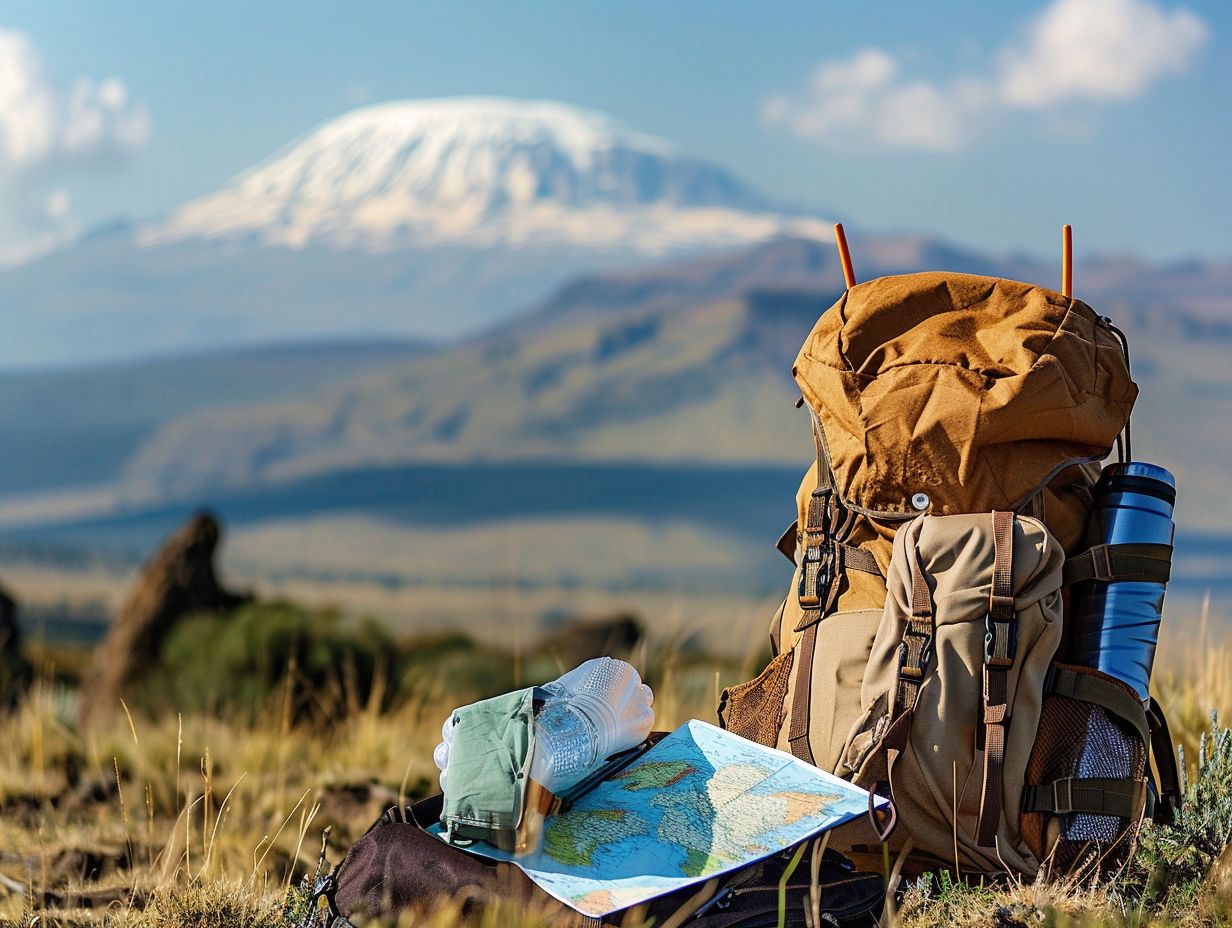
In terms of clothing recommendations for climbing Kilimanjaro, trekking trousers, trekking tops, comfortable underwear, a sun hat, and an insulated hat are essential pieces to ensure climbers are adequately attired for the challenging conditions encountered on the mountain.
Opting for high-quality materials such as moisture-wicking fabrics can help regulate body temperature and keep climbers dry during strenuous hikes. Layering is key on Kilimanjaro; wearing lightweight, breathable trekking tops can easily be adjusted according to the fluctuating temperatures at different altitudes.
Choosing convertible trekking trousers can offer versatility. They can be converted to shorts if the weather gets warmer or vice versa. Comfortable underwear made from quick-drying materials can prevent chafing and ensure climbers stay comfortable throughout the expedition.
A sun hat is crucial for protecting the face and neck from the sun’s intense rays, especially at higher altitudes where UV exposure is stronger. An insulated hat is critical to retain body heat in the cold, windy conditions encountered on the summit push. It’s essential to prioritize both protection from the elements and comfort when selecting clothing for a Kilimanjaro climb.
What Are the Essential Clothing Items for Climbing Kilimanjaro?
Essential clothing items for climbing Kilimanjaro include clothing layers for warmth, waterproof gear for protection, fleece garments for insulation, a down jacket for extreme cold, a base layer for comfort, gloves, mitts, and an insulated hat to shield against harsh weather conditions.
One crucial consideration when preparing for a Kilimanjaro climb is the layering of clothing. Layering not only provides flexibility in adjusting to changing temperatures but also helps in moisture management to keep the body dry and warm.
Base layers are designed to wick moisture away from the skin, whereas mid-layers like fleece provide insulation. The outer waterproof shell acts as a barrier against rain and snow. Wearing gloves, mittens, and an insulated hat ensures protection for the extremities from frostbite, which is a common risk at high altitudes.
Footwear for Climbing Kilimanjaro
Choosing appropriate footwear is crucial for a Kilimanjaro climb. Options include trekking boots, hiking boots like Salomon GTX, gaiters for added protection, sneakers, trainers, and specialized trekking boots designed to withstand the mountainous terrain and offer comfort during the ascent.
When embarking on a challenging journey like climbing Kilimanjaro, the right footwear can make all the difference. Trekking boots are sturdy and provide ankle support essential for navigating uneven terrain. On the other hand, hiking boots such as Salomon GTX offer a balance between durability and flexibility, ideal for long hikes with varying terrain.
Gaiters act as an extra layer of defense, shielding your lower legs from debris and moisture. Sneakers might seem comfortable, but they lack the necessary ankle support for rigorous climbs. Trainers are lightweight but not designed for the rugged conditions of a mountain ascent. Specialized trekking boots stand out for their durability and comfort, keeping your feet protected in the harshest Kilimanjaro conditions.
What Are the Recommended Footwear for Climbing Kilimanjaro?
Recommended footwear for climbing Kilimanjaro includes Salomon GTX hiking boots, gaiters for ankle and leg protection, sneakers for leisure wear, trainers for casual comfort, and specialized trekking boots designed for rugged mountain terrains.
When considering footwear for your Kilimanjaro expedition, it is crucial to prioritize durability, ankle support, and comfort.
- Salomon GTX hiking boots are favored for their waterproofing and traction on varied terrain.
- Gaiters provide additional protection against debris and water, while sneakers offer a break from intense trekking.
- Trainers are ideal for relaxation after a strenuous day of climbing.
- Specialized trekking boots feature enhanced stability and durability to tackle the challenging conditions of the mountain with ease.
What Are the Essential Footwear for Climbing Kilimanjaro?
Essential footwear for a Kilimanjaro climb includes sturdy trekking boots, supportive hiking boots, gaiters for protection against debris, and specialized trekking boots crafted to endure the challenging terrain of the mountain.
Sturdy trekking boots are crucial for providing ankle support and stability on rocky paths, while supportive hiking boots offer cushioning and comfort during long treks.
Gaiters, worn over the boots, shield your lower legs from dust, stones, and snow, enhancing overall protection.
Specialized trekking boots feature durable soles with excellent grip to navigate slippery slopes and rugged terrain effortlessly.
When selecting footwear for the Kilimanjaro expedition, prioritize comfort, fit, durability, and weather-resistance to ensure a safe and successful ascent.
Accessories for Climbing Kilimanjaro
Plus gear and clothing, accessories play a vital role in a successful Kilimanjaro climb. Essential accessories include headgear, eyewear, personal hygiene products, repair kits, cameras, tech equipment, first aid supplies, buffs, sunglasses, insulated hats, and contact lenses to enhance comfort and preparedness during the expedition.
Headgear, such as a reliable sun hat or a warm beanie, protects climbers from extreme weather conditions at different altitudes on Kilimanjaro. Eyewear, like glacier glasses or goggles, shields the eyes from intense sunlight and snow glare.
Personal hygiene products, including biodegradable wipes and sanitizer, promote cleanliness and prevent illness amidst challenging environments. Repair kits for gear maintenance are crucial for quick fixes during the climb.
Cameras and tech equipment, like portable chargers and GPS devices, capture memories and assist navigation. First aid supplies, like blister kits and medication, provide essential medical assistance in emergency situations. Buffs, versatile and multifunctional accessories, offer protection from cold winds and sun exposure.
Sunglasses with UV protection and polarized lenses reduce glare and protect eyes from harmful rays. Insulated hats keep the head warm during chilly nights. Contact lenses, if needed, ensure visual clarity without the hassle of glasses getting fogged or frozen.
What Are the Recommended Accessories for Climbing Kilimanjaro?
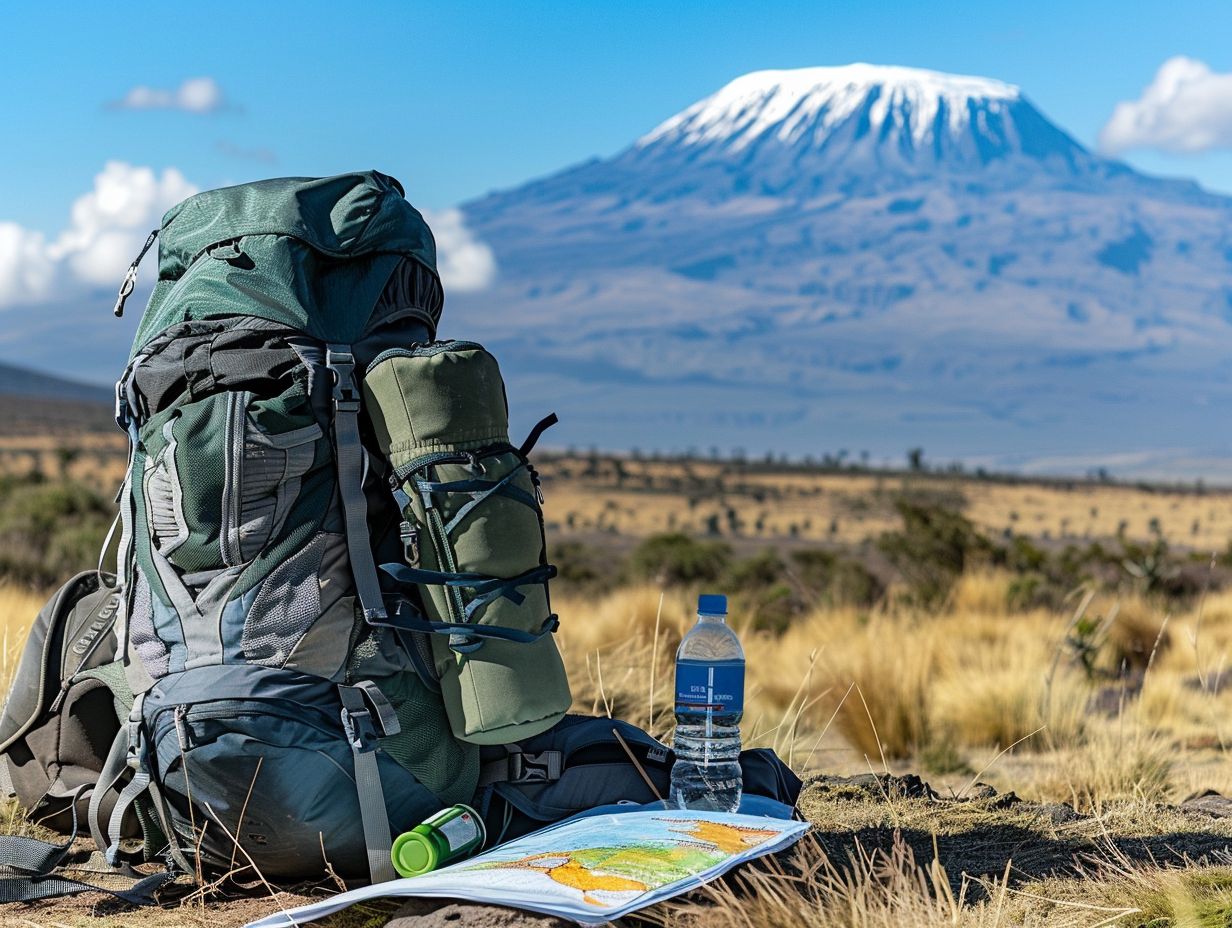
Recommended accessories for climbing Kilimanjaro encompass cameras or tech devices for capturing memories, repair kits for emergencies, first aid essentials, buffs for versatile use, quality sunglasses, and contact lenses for vision correction to ensure climbers are well-prepared for the journey.
Carrying a camera or a tech gadget can help document the breathtaking scenery and personal triumphs throughout the climb. Repair kits are vital in case of unexpected gear malfunctions or equipment damage during the expedition. First aid essentials are critical for treating minor injuries or ailments on the mountain.
Buffs serve multiple purposes, from protecting the face against harsh winds to keeping sweat at bay. Quality sunglasses shield the eyes from UV rays, snow glare, and prevent snow blindness at higher altitudes. Contact lenses are crucial for those requiring vision correction, allowing for clear sight during the trek.
What Are the Essential Accessories for Climbing Kilimanjaro?
Essential accessories for a Kilimanjaro climb include headgear for sun protection, personal hygiene products for cleanliness, cameras or tech gadgets for documentation, first aid supplies for emergencies, buffs for multifunctional use, and insulated hats for added warmth in cold conditions.
Along with the aforementioned accessories, it is crucial to have sturdy hiking boots with excellent grip to navigate challenging terrains, moisture-wicking clothing to manage perspiration and stay dry, trekking poles for stability and support, a high-quality backpack to carry essentials comfortably, and a reliable water bottle for hydration during the ascent.
Investing in a durable and lightweight tent for overnight stays at campsites, a navigation device such as a GPS or compass for route finding, and a reliable headlamp for nighttime visibility are essential for a successful and safe climb up Kilimanjaro.
Toiletries and Medications for Climbing Kilimanjaro
Toiletries and medications are vital components of any Kilimanjaro climb. Personal health items, medications like anti-malarial tablets, first aid essentials including Diamox, Dexamethasone, Nifedipine, and remedies for high altitude sickness are essential for maintaining well-being during the expedition.
When preparing your health kit for Kilimanjaro, hydration tablets to combat altitude-induced dehydration, blister plasters for foot care, and sunscreen for skin protection are also crucial additions.
Carrying a comprehensive supply of any prescription medications you may require is important, along with extra supplies in case of unexpected delays in your journey.
What Are the Recommended Toiletries and Medications for Climbing Kilimanjaro?
Recommended toiletries and medications for climbing Kilimanjaro include personal health items for hygiene, anti-malarial tablets for disease prevention, Diamox for altitude sickness, and other essential medications to address common health issues encountered during the climb.
Personal health items, such as biodegradable soap, wet wipes, and quick-dry towels, are crucial for maintaining cleanliness and preventing infections on the mountain. Anti-malarial tablets are essential due to the risk of contracting malaria in the region, while Diamox helps in acclimatizing to the high altitudes and minimizing the chances of altitude sickness.
- Carrying an array of essential medications, including painkillers, anti-diarrheal drugs, and antibiotics, can help treat common health problems that climbers often face.
- It’s advisable to pack a comprehensive health kit with items like adhesive bandages, blister pads, and oral rehydration salts to address minor injuries and dehydration issues promptly.
What Are the Essential Toiletries and Medications for Climbing Kilimanjaro?
Essential toiletries and medications for climbing Kilimanjaro encompass personal health items for hygiene maintenance, first aid essentials, necessary medications for personal health conditions, and remedies like Nifedipine for high altitude sickness to ensure climbers are equipped for health challenges during the climb.
Items such as sunscreen, lip balm with SPF, and sunglasses are crucial to protect against the intense sun exposure at higher altitudes.
In terms of first aid, items like adhesive bandages, antiseptic wipes, pain relievers, and blister treatment products are critical for addressing minor injuries and discomfort. It is also advisable to include oral rehydration salts to combat dehydration which is common in high-altitude environments.
Bringing along medications for altitude sickness such as Acetazolamide can aid in acclimatization and reduce symptoms like headaches and nausea.
Frequently Asked Questions
What should be included on my Kilimanjaro Packing List?
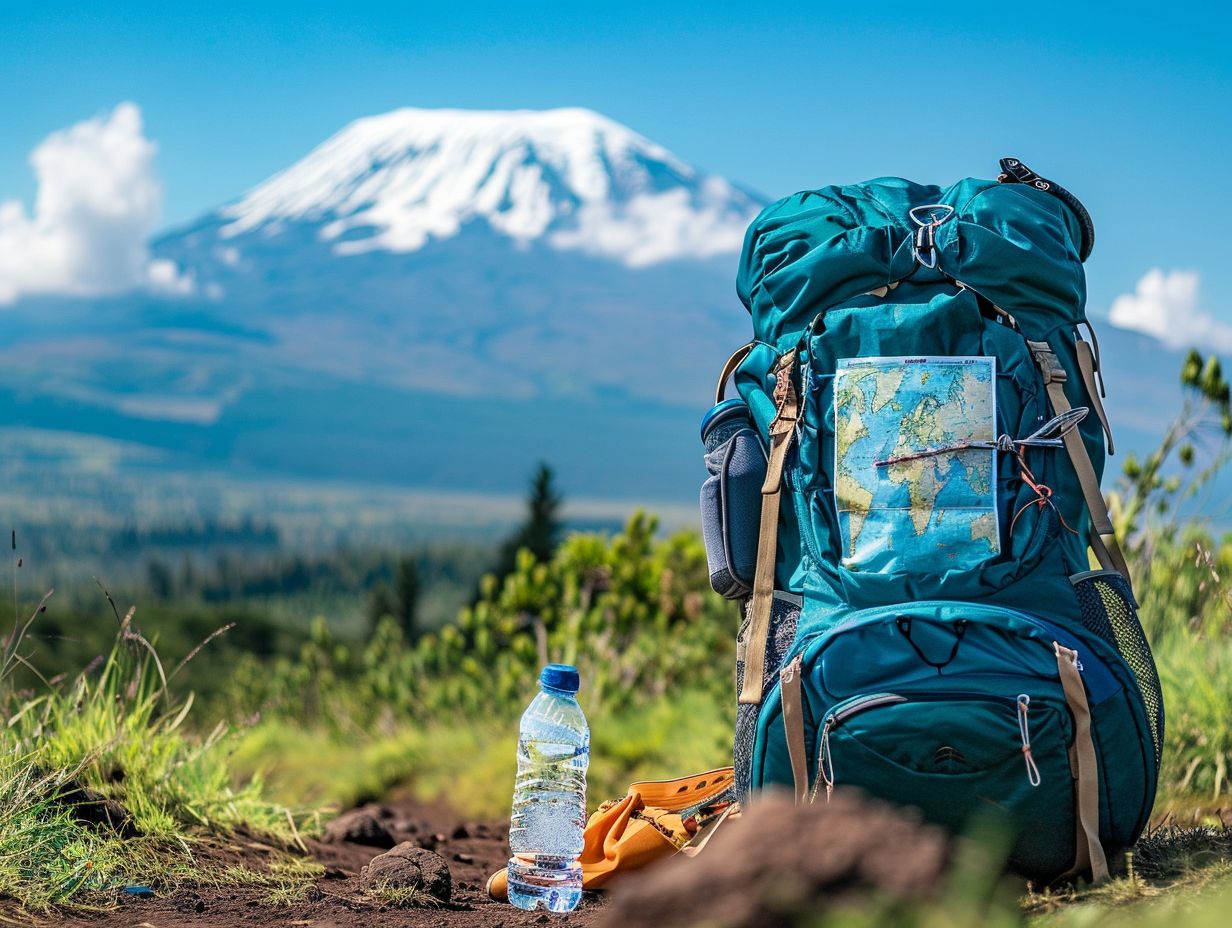
Your Kilimanjaro Packing List should include essential items such as hiking boots, warm layers, rain gear, a hat and gloves, a backpack, a sleeping bag, and toiletries. You should also consider bringing altitude sickness medication, snacks, and a camera.
Do I need to pack anything specific for high altitudes?
Yes, it is important to pack appropriate gear for high altitudes on your Kilimanjaro Packing List. This includes warm layers, a down jacket, a warm hat and gloves, and a sleeping bag rated for sub-zero temperatures. It is also recommended to bring altitude sickness medication and a portable altitude chamber.
Is there a weight limit for my Kilimanjaro Packing List?
Yes, most tour companies have a weight limit for the gear you can bring on your Kilimanjaro trek. This is usually around 15-20kg, including your backpack. It is important to pack light and only bring essential items to stay within the weight limit.
What type of shoes should I pack for Kilimanjaro?
It is important to have sturdy and comfortable hiking boots on your Kilimanjaro Packing List. These should be waterproof and have good ankle support. It is recommended to break in your boots before your trip to avoid blisters and discomfort on the trek.
Should I pack snacks for my Kilimanjaro trek?
Yes, it is recommended to pack snacks for your Kilimanjaro trek. These can include energy bars, trail mix, and other high-energy snacks to fuel you during the trek. It is also a good idea to pack snacks that are individually wrapped for convenience and to avoid littering on the trail.
Do I need to pack my own water for the Kilimanjaro trek?
No, you do not need to pack your own water for the Kilimanjaro trek. Most tour companies provide clean drinking water for their climbers. It is important to stay hydrated on the trek and drink plenty of water throughout the day.